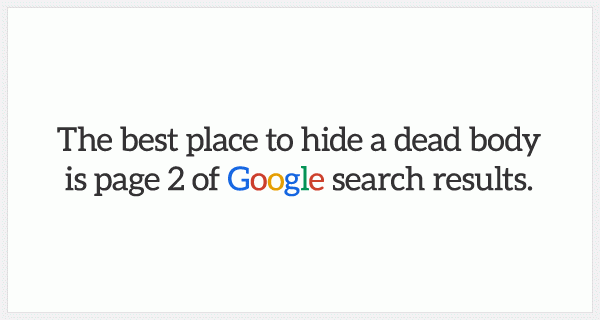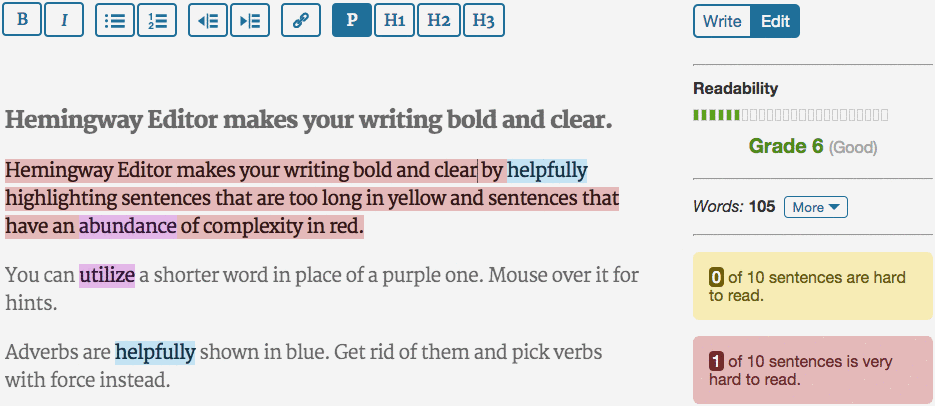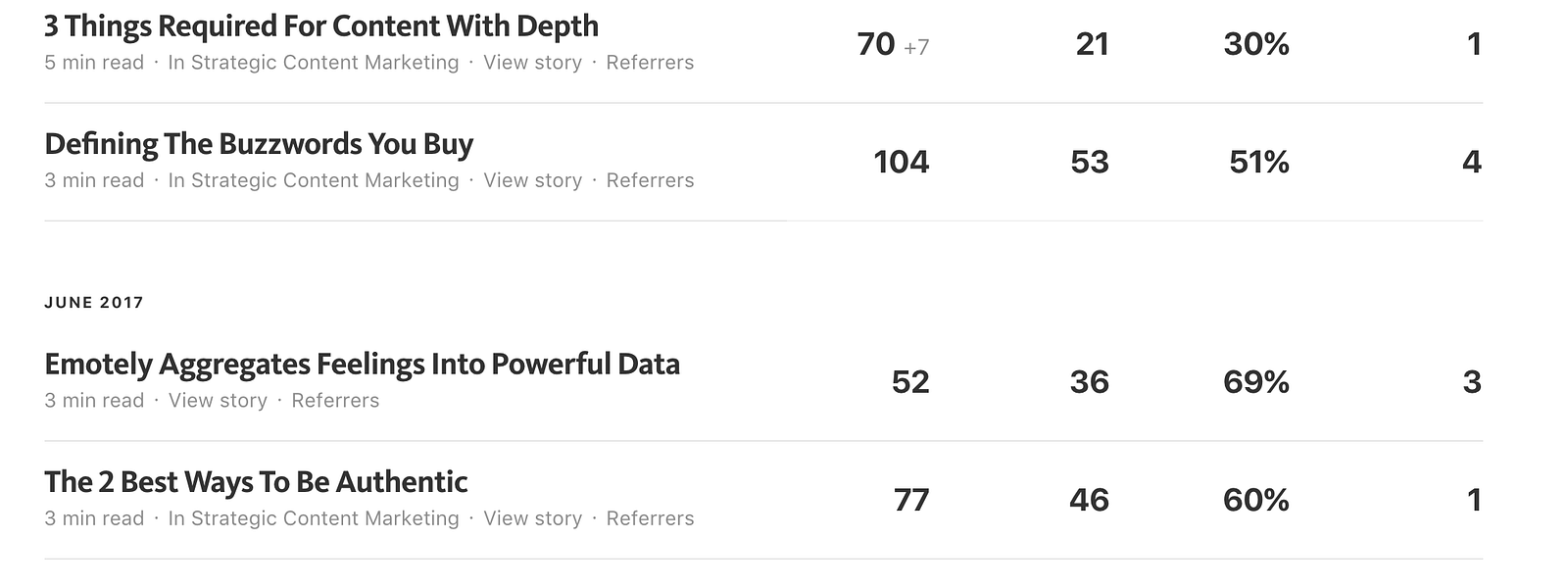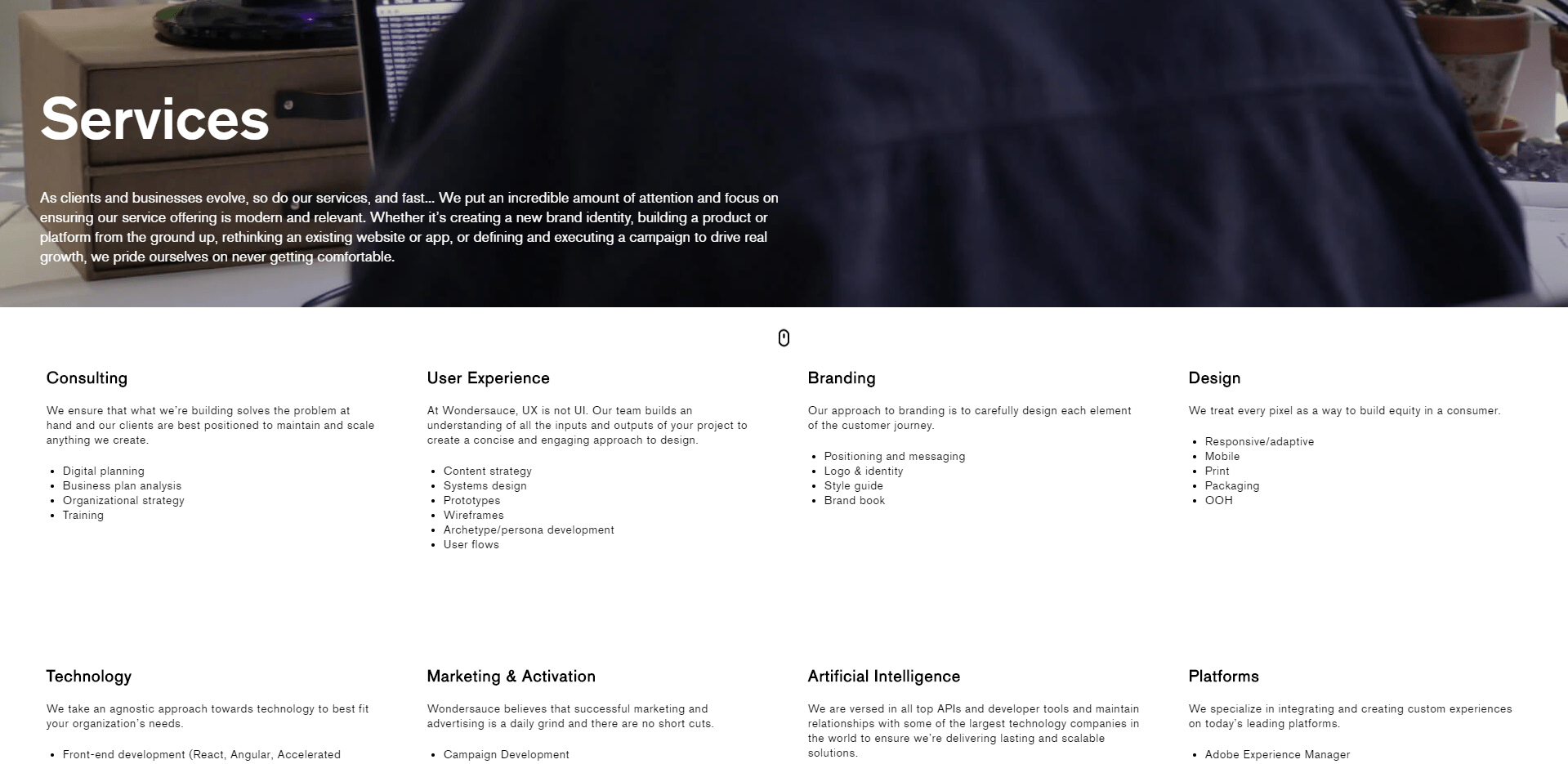Sourced from Inbound Rocket.
Building an audience for your company can be achieved in a couple of different ways. In the old days, you would buy ads in your (local) newspaper; you did radio ads, tv ads or any other ad you could afford with your marketing budget.
Then came the internet and the same old advertising model moved along to the web.
But people are getting blinder every day for these types of companies trying to scream for attention. In a recent piece on Medium Jeremy Ettinghausen even called it “Why Does Digital Advertising Suck?”
He states:
The reason most digital advertising isn’t very good is because most people in advertising don’t really get the internet.
So unless you’re creative and have the potential budget to act upon it, how can you and your small business still generate business online?
That’s where Content Marketing came in over the last couple of years. After all, you know your market in which you’re operating best, right? So why can’t you help your potential customer solve their problems in the same way your product helps them only through media you are creating and promoting?
One of the biggest challenges faced by people doing Content Marketing though is how can you build an audience when your content is not being indexed properly by search engines. And if you do try to optimise your content too much for search engine indexation will it still appeal to your readers?
As we wrote in an earlier topic, SEO content isn’t that complicated, once you understand that with whatever you write the readers comes first, the user is more important than any search engine robot, you’ve already won the first battle.
Winning in Content Marketing, means you need to go further than just producing content for the sake of creating content. It needs to appeal to the reader by helping them solve their problems, AND it needs to appeal to search engines, so you get a good ranking.
But how can you create content that ranks well in Google and other search engines and still appeals to your readers? That is where SEO Copywriting comes in. It helps you to write content for people and at the same time optimising for Google.
What is SEO
But before we can start we first have to get our basics right. What is SEO?
SEO stands for “Search Engine Optimization.” It is the process of getting traffic from the “free,” “organic,” “editorial” or “natural” search results on search engines.
So in other words, by using SEO, you’re trying to make sure that your website has a higher position in search results. SEO seeks to optimise your website in such a way that the algorithms of Google, Bing and others rate your site in such a way that you get a higher ranking.
Although the actual way this ranking works has always been (and probably will always be) a secret, over the years more and more people started to figure out what kind of things are necessary to get a higher ranking.
These items that can help you rank better can be divided into two categories. On-page SEO factors and Off-page SEO factors.
On-page SEO factors are the things you can change and optimise on your own website. Like technical changes, or the way you write your copy.
Off-page SEO is slightly more complicated because it involves things that are not happening on your domain and have little to no control over. Although the most important off-page factor is probably getting backlinks to your website. The more (relevant) sites link to your site; the higher your ranking will be.
In this article, we will be focusing on on-page SEO, and specifically how to write better copy.
Copywriting?
At its core copywriting is re-arranging words to make your products or services sell better. It is like that salesman who makes all the sales at your company, only then in writing form.
Copywriting is the art and science of creating copy, creating content that prompts the reader to either buy your product, subscribe to your email list, or take any action that you want as a result after reading that copy.

What drives a reader of your copy to take action? A good copywriter does, copywriting is all about:
- Getting them to WANT to engage with you….not spamming them with offers.
- Generously giving something valuable to the person….not just “greedily asking” for stuff.
- Getting them to WANT to buy from you….not out of pressure, but because they enjoy your content and help.
Being a good copywriter first starts by understanding your audience. A good copywriter knows what his or her audience likes and chooses the words that will appeal to them. The headline, words, phrases, quotes used in the content are there to persuade and cause the reader to take action.
Next, to that, an SEO copywriter not only understands his human audience, but he also understands how search engines feel about certain words and phrases.
The beautiful thing is, in theory, everyone can become a good copywriter, just like everyone can be a good storyteller. The only way to become one though is by lots and lots of practice.
How to write copy for SEO?
Writing copy for SEO, just means that you want to create content with the goal of attracting search engine traffic. After all:
As you can see, if you do any business online, it is important that you optimise your content for search engine.
The better optimised it is, the better the ranking of your content. It could bring you to the holy grail, that first page of search results. Or even the first position. You will get more click, shares, likes, engagement and conversions. If nobody can find your website, then even the best-written content is pointless.

Writing SEO friendly content though sounds simpler than it might be seen. There are some steps involved, next to just producing content if you want it to be able to rank well.
At it’s core writing copy for SEO can be done in four steps:
- Keyword research – if you want people to be able to find your content, you first need to figure out what it is that you want to get found on. If you do the research for quality keywords at the start, you can start to produce content that you know people are looking for.
- Keyword optimisation – Now that you know what words, or combination of words work best for your company, you can start to figure out where and how to use these keywords in your content.
- Content organisation – Even though you want to include the keywords into your content, you just don’t want to stuff your entire piece with the same keywords. A good piece of content is organised in a logical way. This will help the robots to better understand what the content is about and next to that it will also help your visitors to consume the content better and as a result stay longer on your site.
- Content promotion – Content creation is only half the battle – the rest is gaining notice. After you published your new piece, be sure to promote and share it on different places to build visibility and backlinks.
Keyword research
A keyword is a word (or a phrase) that one might type into a search engine to find what you’re looking for. There could be thousands of words and phrases related to the content that you’re creating, so the challenge is the find the best ones for you that will drive the most traffic to your site.
So what makes a keyword a unique keyword? People tend to think that a good keyword is a popular one automatically. Popularity is not the primary focus you should have though; the main focus should be relevancy, followed by popularity.
Finding relevancy, first starts by thinking what you want to rank about. Write down in one sentence what you want to be find for. The next step will be coming up with questions related to that one sentence. The more questions you can think of the better. And finally you can imagine what it is you would type into a search engine if you want to get an answer to those questions.
Let’s give a concrete example. Say you want to create a page that talks about the best exercises you can do at home, without the need of any gym equipment. The first step is coming of with a statement, a one sentence describing what you want to talk about: “How to build muscle and strength at home without lifting weights”
Potential questions this page might answer are: “How can you become stronger without lifting weights?”, or “How can you use your body for weightlifting?”, or “What exercises can you do without gym equipment?”.
Potential search queries could include “losing weight”, “building muscle”, “easy steps to become stronger”, “workouts at home”, “workouts for men”, “workouts for women”, “beginner home workouts”, “best home workout”, etc.
While you now have a list of potential keywords. The next step is to identify the most important ones for you. Using the Google Adwords Keyword Planner you can get an estimate, based on real data, of the total number of searches that people are doing for these keywords each month. Next to that as an added bonus you also get a list with up to 800 keywords that are similar to the one you entered.
Other great tools are SEMRush (both paid and free) and KeywordTool.io.

Using SEMRush to do Keyword research
Using this information you can refine your list, deleting the ones that at the end don’t seem that optimal. In an ideal situation, you want to end up with no fewer than two and no more than maximum eight keywords for your piece of content.
Not sure which keywords to delete and which ones to keep? Remove any keywords or phrases that don’t sound natural that sound like some bad copywriter tried to write and advertisement. Or phrases that mention a competing brand by name.
The final step you need to take with the narrowed down list, is identifying your primary keyword (or long tail keyword). Again, this one doesn’t have to be the most popular keyword from the list of remaining items. But it is the one that describes your piece of content, your page the best. When it does that, you know your page will address the unique needs of the person searching for it and ending up on your site.
Now that you’ve chosen your primary keyword, the next task will be to select a handful of secondary or short tail keywords. These keywords should expand the range of people’s search to which your page could still be considered relevant, without losing too much of it’s focus.
After that, it’s time to optimise your content.
Keyword optimisation
The first step is often the hardest, so also in this case. Identifying the correct keywords for which you want to rank is the hardest part, now we need to start tweaking our page, by putting those keywords in the right spots.
The most important places for your keywords to appear in are:
- Body copy
- Your headings and subheadings
- Your page title
- Your meta description
- Your URL or permalink
- Alt texts of your images
Don’t go crazy by putting to much of your keywords (both long and short tail) in your content though. A good ratio is 1-2% of your text maximum should be your keywords. So, that means in a 500-word article, you should include the keywords no more than 5-10 times.
Integrate them naturally in your content, as we stated in an earlier article search engines are becoming better and better in understanding human writing. If the placement of your keywords look to weird, to unnatural Google and other will notice this and may punish you for it.
A great way to check if you did not over optimise is by using a free tool like Keyword Density Checker.
Content organisation
The third step is making sure your content is organised in such a way that it makes it easy for the reader ready to consume your piece of content. How can you optimise it in such a way that it is easy to the eye and easy on the mind to consume?
Let’s first start with the readability of your content. There are some great tools out there that can help you improve your writing.
Hemingway Editor

The Hemingway Editor is available as web app, but also as desktop application
The Hemingway Editor is a great tool for almost all of your writing tasks. You don’t want to bore people with difficult words, with large unreadable sentences. That’s how you scare away your readers! Hemingway Editor analyses your text to find any sentences that are difficult, or even “very difficult”, to read.
It highlights these sentences. Next, to that, it also highlights instances where your copy is too passive. The easier it is to consume a piece of content, the longer people will stay on your site to consume the entire piece of content and the higher the chances of them sharing your content.
More shares, means of course more people getting your content presented to them and the articles that get shared the most get the best SEO rating.
Read-Able

Read-Able Readability Test Tool
Read-Able is quite similar to Hemingway editor. It also analyses your copy based on readability, but instead of highlighting individual sentences that need improving, it gives your text and overall readability score. This score tell you what age group will be able to easily read your content. If you’re article is already online, you can also enter your URL instead op copy pasting the text.
Help.Plagtracker

Plagtracker – Professional Editing Assistance
If you’re writing content of course a lot of people look around on the web nowadays for inspiration. Sometimes you’re inspiration however, might be a bit to literal resulting in content that looks and sounds to much like other content already out there. Although it is perfectly fine to get some inspiration online, it is never okay to plagiarise content. Plagtracker will analyse your piece of content, looks for any instances of plagiarism, and replaces them with new, original content.
Other items to focus on with the organisation of your content, having a clear structure, adding visuals to make it visually more attractive, internal linking, etc.
Content promotion
Even if you produce the best content in the world, so is everyone else. According to research done in 2012 by the Content Marketing Institute (so probably by now these numbers are even higher) 90% of B2B marketers use content marketing.
So when everyone is doing it? How can you stand out above the rest? How can you get your content noticed faster and better than your competitors?
The answer is content promotion.
Creating and optimising your content on your website is only part of the process; once you’ve created it, content promotion helps you get in front of the right audience at the right time.
Thankfully, most traditional marketers have no idea how to promote their content (next to putting advertisement budget behind it), so it has only a small portion of the reach it could have.
If you want to be better than your competitor start promoting your content on all the channels you can after it is published. This means social media, specialised communities for around your topics, email newsletter. And not just on your company channels, using tools like Social Seeder, you can use the power of your employees and your brand ambassadors to share and amplify your content.
Creating content requires a lot of time, skill and knowledge. If you want to start getting better search traffic to your website, you’re going to put in the work.
The success of your content and its marketing value, however, will first depend on the quality of the content itself. Next to that the “small” details as outlined in this article will help you push your content further.
Don’t start with the optimisation of your content though; you want your content to read and feel natural.
So, first put down all your thoughts in an article, post, page or any other piece of content you want to create and only then start using the above techniques to make those final tweaks to make sure it ranks even better.
What’s your take on SEO copywriting? Do you think it’s a major factor for online content marketing success? How are you optimising your content at your company? Leave a comment below!


































